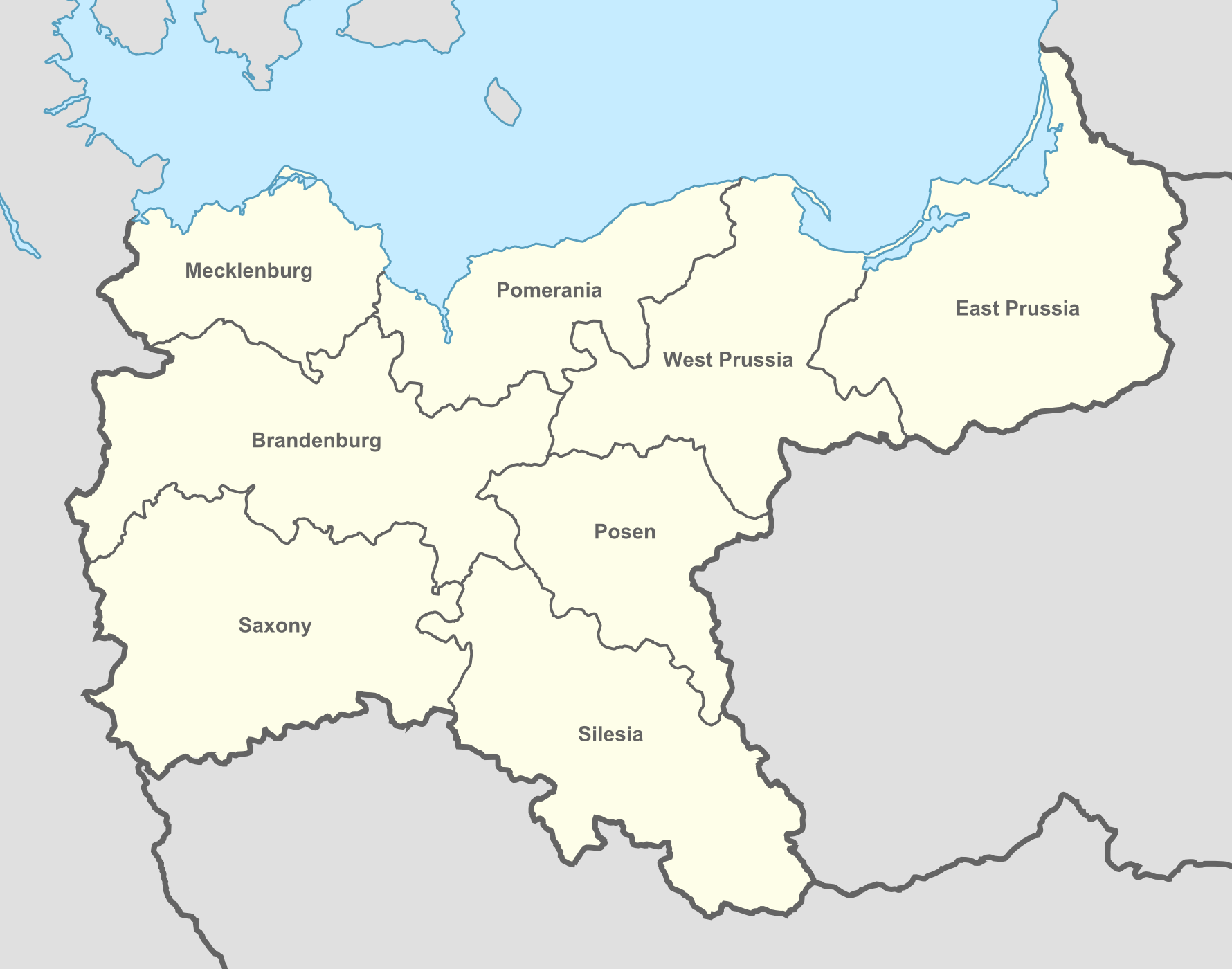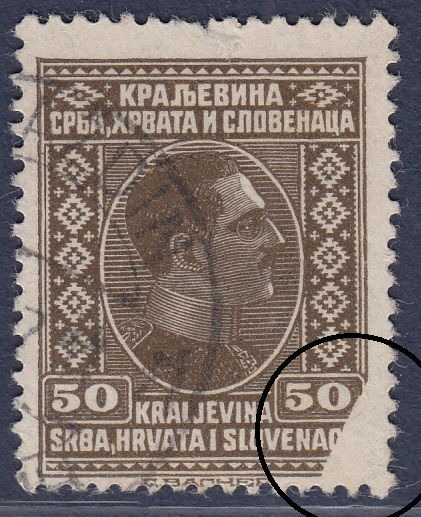 Among the most interesting stamps that exist in our hobby are the stamps of the German States. What we call Germany today is a very recent political invention. The area of Germany was never part of the Roman Empire, and so the various Germanic tribes that occupied and conquered that area were never unified. As the Middle Ages progressed the area was unified under Charlemagne and then under the political hodge-podge that was the Holy Roman Empire. But by the early Nineteenth Century the political climate of Germany was very diffuse with many principalities calming jurisdiction over the area.
Among the most interesting stamps that exist in our hobby are the stamps of the German States. What we call Germany today is a very recent political invention. The area of Germany was never part of the Roman Empire, and so the various Germanic tribes that occupied and conquered that area were never unified. As the Middle Ages progressed the area was unified under Charlemagne and then under the political hodge-podge that was the Holy Roman Empire. But by the early Nineteenth Century the political climate of Germany was very diffuse with many principalities calming jurisdiction over the area.
Monthly Archives: June 2018
- Posted June 29, 2018in NewsRead more »The early postage stamps of the German area reflect this. There were many different entities that had separate political power, and stamps were issued from at least ten separate countries. Two, Bavaria and Prussia, dominated the political landscape,
- Posted June 28, 2018in NewsRead more »
 Foreign collectors believe that collecting United States stamps is the most difficult of all national collecting specialties. The reason is that we make too many major catalog numbers of stamps on which the differences are very hard to distinguish. It starts with the one cent 1851's of which there are seven major catalog numbers of a single design and color, but it really reaches its apotheosis with the Bank Note Issue beginning in 1870 (These issues are called the Bank Note issues because the the US Post Office changed its printing contract to award it to a printing company that also printed currency).There are three main issues of Bank Notes along with numerous reissues and special printings and in all comprise nearly 60 major catalog numbers for eleven different stamp designs. The catalog does a pretty good job with an overview of
Foreign collectors believe that collecting United States stamps is the most difficult of all national collecting specialties. The reason is that we make too many major catalog numbers of stamps on which the differences are very hard to distinguish. It starts with the one cent 1851's of which there are seven major catalog numbers of a single design and color, but it really reaches its apotheosis with the Bank Note Issue beginning in 1870 (These issues are called the Bank Note issues because the the US Post Office changed its printing contract to award it to a printing company that also printed currency).There are three main issues of Bank Notes along with numerous reissues and special printings and in all comprise nearly 60 major catalog numbers for eleven different stamp designs. The catalog does a pretty good job with an overview of - Posted June 25, 2018in NewsRead more »
 The engine of philatelic popularity and growth over the 170 or so years that philately has been a hobby has traditionally been the stamps of Central Europe-Germany and its numerous component areas, Switzerland, Austria and to a lesser extent Liechtenstein. In 1930 there were probably as many serious German collectors as there were in the rest of the world combined. The numbers are dwindling as young German Swiss and Austrian children are being drawn to their computer games and away from hobbies in general. This means there will be a vast and growing overhang of Central European stamps on the market in the coming years, and it is hard to see where there will be enough collectors to soak up the supply.The Michel specialized catalog for the German area has specialized German philately to a level of minutia that is mind boggling, even t
The engine of philatelic popularity and growth over the 170 or so years that philately has been a hobby has traditionally been the stamps of Central Europe-Germany and its numerous component areas, Switzerland, Austria and to a lesser extent Liechtenstein. In 1930 there were probably as many serious German collectors as there were in the rest of the world combined. The numbers are dwindling as young German Swiss and Austrian children are being drawn to their computer games and away from hobbies in general. This means there will be a vast and growing overhang of Central European stamps on the market in the coming years, and it is hard to see where there will be enough collectors to soak up the supply.The Michel specialized catalog for the German area has specialized German philately to a level of minutia that is mind boggling, even t - Posted June 22, 2018in NewsRead more »
 The three great scourges of humanity have historically been war, famine, and pestilence. Modern technology though seems to have solved the problems of the devastation of two of these. In the last two centuries over 100 million people have died in famines. But fertilization, irrigation and genetic engineering have today made famine more of a byproduct of war than a primary killer. And infectious disease, after killing hundreds of millions throughout history, has largely been defeated. But war still kills millions each decade, and in the nuclear age we are always just a few poor Presidential decisions away from complete annihilation.But wars make for great philately. Borders change, troops write home, postal service is makeshift and intermittent. And no war is more inte
The three great scourges of humanity have historically been war, famine, and pestilence. Modern technology though seems to have solved the problems of the devastation of two of these. In the last two centuries over 100 million people have died in famines. But fertilization, irrigation and genetic engineering have today made famine more of a byproduct of war than a primary killer. And infectious disease, after killing hundreds of millions throughout history, has largely been defeated. But war still kills millions each decade, and in the nuclear age we are always just a few poor Presidential decisions away from complete annihilation.But wars make for great philately. Borders change, troops write home, postal service is makeshift and intermittent. And no war is more inte - Read more »
 Before 1859 Romania didn't exist in its current form and one of its component nations, Moldavia, was one of the first issuers of stamps. The famous Moldavia Bulls have been a favorite of philatelists since the beginning of our hobby. They combine the three characteristics that collectors most esteem-they were issued for purely postal purposes with no advance warning to collectors and no hoarding. They are primitive in design and execution. And they are, and always have been, rare. A short look at these three philatelic characteristics of popularity will help explain how our hobby developed and cast light on many aspects of philately that are still with us today.The relationship between stamps' postal purpose and philatelic issues has always been a confused one in the mind of many stamp collectors. The earliest stamps were obviously
Before 1859 Romania didn't exist in its current form and one of its component nations, Moldavia, was one of the first issuers of stamps. The famous Moldavia Bulls have been a favorite of philatelists since the beginning of our hobby. They combine the three characteristics that collectors most esteem-they were issued for purely postal purposes with no advance warning to collectors and no hoarding. They are primitive in design and execution. And they are, and always have been, rare. A short look at these three philatelic characteristics of popularity will help explain how our hobby developed and cast light on many aspects of philately that are still with us today.The relationship between stamps' postal purpose and philatelic issues has always been a confused one in the mind of many stamp collectors. The earliest stamps were obviously - Posted June 19, 2018in NewsRead more »There are three things that every collector should do to maximize the return that they receive for their stamps when they go to sell, and I will address them in ascending order of importance. First, it is very important to have some figures on your stamp collection. Do you have records of how much you spent? If so, add them up. If not, make a fair estimate based on the amount you felt like you spent per year over the years, making allowance for the years that your collecting was dormant. Most collectors won't get back the full amount that they spent, but at least this will give you some basis to judge how much your collection is worth. If you can catalog the collection by a recent year of the Scott catalog, it is a good idea to do so. Collections generally sell at low percentages of Scott value but they do sell at percentages, and this is a way to evaluate the offers that you receive. Further, it lets you contact dealers in an informed way and enables them to give some idea of their le
- Read more »
 The degree of difficulty of a philatelic specialty is determined by three components. First is the intrinsic scarcity of the material, second the cost involved, and third the number of specialized striations into which the field has been separated. Scarcity and cost are related. Scarcity is an intrinsic value related to the amount of material that is available to collectors. It is derived from the numbers that were printed and more importantly the numbers that were saved and have been passed down to stamp collectors. Cost relates to how that intrinsic scarcity interacts with demand. Honduras has many very rare stamps that sell for only a few dollars. Great Britain have many relatively common stamps (such as the Penny Black) that sell for a hundred dollars or more. So cost and scarcity are different factors when considering a specialty. Most want scarcity; not everyone wants costly. And third, the degree of specialization needs to be considered. Each philatelic specialty has a tradition o
The degree of difficulty of a philatelic specialty is determined by three components. First is the intrinsic scarcity of the material, second the cost involved, and third the number of specialized striations into which the field has been separated. Scarcity and cost are related. Scarcity is an intrinsic value related to the amount of material that is available to collectors. It is derived from the numbers that were printed and more importantly the numbers that were saved and have been passed down to stamp collectors. Cost relates to how that intrinsic scarcity interacts with demand. Honduras has many very rare stamps that sell for only a few dollars. Great Britain have many relatively common stamps (such as the Penny Black) that sell for a hundred dollars or more. So cost and scarcity are different factors when considering a specialty. Most want scarcity; not everyone wants costly. And third, the degree of specialization needs to be considered. Each philatelic specialty has a tradition o - Posted June 08, 2018Read more »
 Coin collecting has been dominated over the last fifty years by third party grading issues to the point where few serious numismatists buy non-graded coins. Eager grading services have tried to push into philately hoping to enlarge their fee base. So far it hasn't worked. Some collectors have become enamored of graded stamps but most think that it is inconvenient and costly. There are several reasons why third party grading is popular for coins and why it has largely failed in philately, despite two separate, (one in the late 70's and the other a few years ago) highly promoted, and well funded grading service attempts to make it stick. Third party grading has created changes in numismatics that has made it very different from philately, with which it traditionally has shared many characteristics.
Coin collecting has been dominated over the last fifty years by third party grading issues to the point where few serious numismatists buy non-graded coins. Eager grading services have tried to push into philately hoping to enlarge their fee base. So far it hasn't worked. Some collectors have become enamored of graded stamps but most think that it is inconvenient and costly. There are several reasons why third party grading is popular for coins and why it has largely failed in philately, despite two separate, (one in the late 70's and the other a few years ago) highly promoted, and well funded grading service attempts to make it stick. Third party grading has created changes in numismatics that has made it very different from philately, with which it traditionally has shared many characteristics. - Posted June 07, 2018Read more »
 Book readers sort into two main groups: the first looks at each volume as a challenge to be surmounted. Starting on page one, this group reads page by page until they are done, stopping for other activities but only reading one book at a time. Other readers are more casual about reading, often reading many books simultaneously, alternating between fiction and non fiction as the mood hits and as time allows.
Book readers sort into two main groups: the first looks at each volume as a challenge to be surmounted. Starting on page one, this group reads page by page until they are done, stopping for other activities but only reading one book at a time. Other readers are more casual about reading, often reading many books simultaneously, alternating between fiction and non fiction as the mood hits and as time allows.
Stamps collectors too fall into these broad categories. Many are one one country or one specialty collectors and they spend significant time and money creating fine collections of their area. The rewards for this kind of collecting temperament is the sense of accomplishment that comes from devoting all your energies to one goal and attaining that goal to the best of your abilities. But the other model for collecting, where you have multiple areas of interest, and move back and forth depending - Posted June 05, 2018Read more »
 Aerophilately has been a popular philatelic specialty for nearly a hundred years now. No country has as many interesting Airmails as does France, and indeed the Airmails of France cover many of the more esoteric aspects of our hobby. The first two Airmails are overprints and show that aspect of stamp issuance; an earlier issue receives an additional print that changes its purpose and often the postage that it was originally sold for. The second issue of the Airmails of France are the famed Ile de France Airmails. These Airmails are provisionals issued for just one flight and not available through the general philatelic agency. Like many of the rarest early worldwide Airmails, they have a quasi-official character, and, had they not been placed in prominent collections at the early period that they were, they probably would not today enjoy major catalog number status.
Aerophilately has been a popular philatelic specialty for nearly a hundred years now. No country has as many interesting Airmails as does France, and indeed the Airmails of France cover many of the more esoteric aspects of our hobby. The first two Airmails are overprints and show that aspect of stamp issuance; an earlier issue receives an additional print that changes its purpose and often the postage that it was originally sold for. The second issue of the Airmails of France are the famed Ile de France Airmails. These Airmails are provisionals issued for just one flight and not available through the general philatelic agency. Like many of the rarest early worldwide Airmails, they have a quasi-official character, and, had they not been placed in prominent collections at the early period that they were, they probably would not today enjoy major catalog number status. - Posted June 04, 2018Read more »Philately has many collectibles. Stamps are obvious; covers are stamps on envelopes and are derivative from the stamps themselves. And Proofs and Essays are precursors, coming before (and sometimes instead of) the stamps that they are associated with. As all of these types of philatelic material are related to the official issuance and use of stamps, they have always been esteemed by collectors. But what about Printer's Waste?
 Printer’s Waste is a fairly amorphous term. Technically it means any printing related to postage stamps done by stamp printers that was
Printer’s Waste is a fairly amorphous term. Technically it means any printing related to postage stamps done by stamp printers that was
